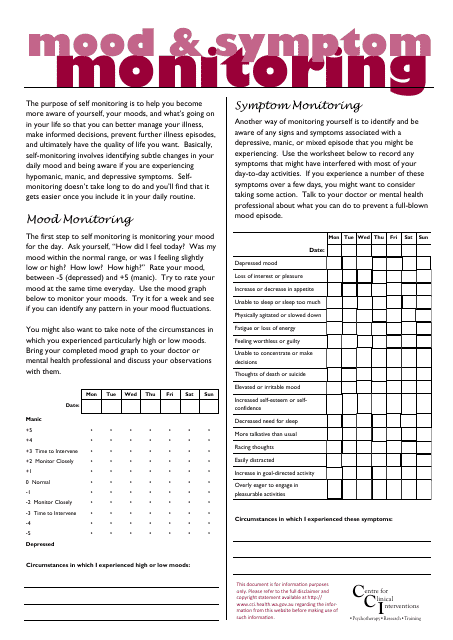Mood & Symptom Monitoring
Mood & Symptom Monitoring is used to track and monitor changes in an individual's mood and symptoms, especially in the context of mental health. It helps individuals and healthcare professionals to identify patterns, triggers, and treatment effectiveness, enabling better management of conditions like depression, anxiety, or bipolar disorder.
The Mood & Symptom Monitoring is typically filled by the individual themselves or by the healthcare provider if it is part of the treatment plan.
FAQ
Q: What is mood and symptom monitoring?
A: Mood and symptom monitoring is the process of keeping track of your mood and any physical or emotional symptoms you experience on a regular basis.
Q: Why is mood and symptom monitoring important?
A: Mood and symptom monitoring can help you better understand your mental and physical health, identify patterns and triggers, and make informed decisions about your well-being.
Q: How can I monitor my mood and symptoms?
A: There are various ways to monitor your mood and symptoms, such as using mood tracking apps, keeping a journal, or using self-assessment scales provided by healthcare professionals.
Q: What are the benefits of mood and symptom monitoring?
A: Some benefits of mood and symptom monitoring include early detection of changes in mental or physical health, better communication with healthcare providers, and improved self-awareness.
Q: Can mood and symptom monitoring help with mental health conditions?
A: Yes, mood and symptom monitoring can be particularly helpful for individuals with mental health conditions as it allows them to track their symptoms, identify triggers, and work with healthcare professionals to develop effective treatment plans.




